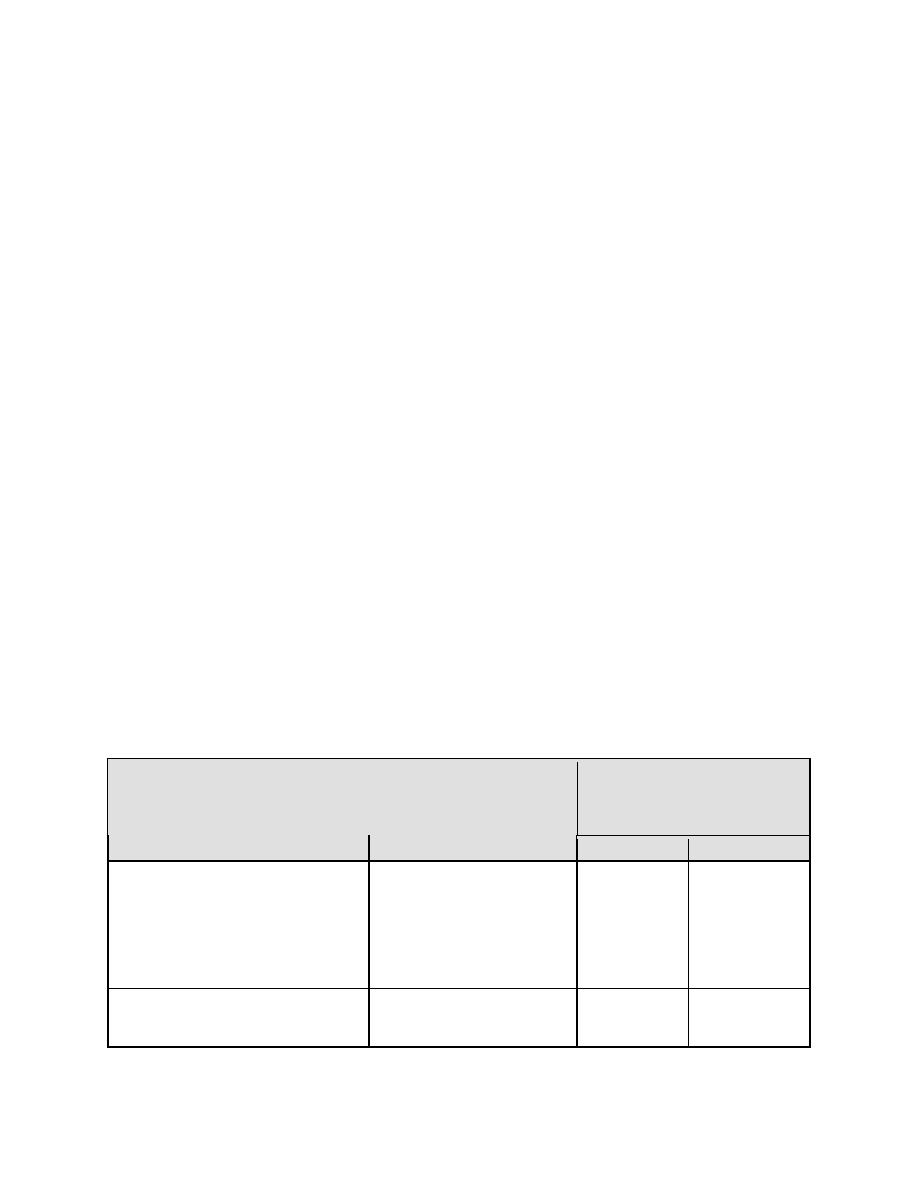
UFC 3-280-04
17 DEC 2003
APPENDIX D
CARTRIDGE FILTER
D-1
WASTE STREAM CHARACTERISTICS
Maximum flow: 7 L/s (110 gpm).
Maximum operating temperature: 60 degrees C (140 degrees F).
Design influent suspended solids: 1 mg/L (1 ppm).
Design effluent particle size: 10 microns.
Filter change out frequency: twice weekly (maximum).
Influent pH: 8.0.
The waste stream to be treated also contains residual soluble alum from up-
stream treatment process and aluminum nitrate(s) and barium chloride(s), which is to be
treated by a downstream membrane process. Trace amounts of amyl alcohol are also
present in the waste stream (s = soluble).
D-2
SELECTION OF FILTER MATERIALS OF CONSTRUCTION. The chemicals
in the waste stream are compared to the general chemical resistance chart, Table D-1.
The chemical resistance chart is compared to polypropylene cartridge filter material.
Based on the comparison, polypropylene is compatible with the chemicals in the waste
stream. A review of Table D-1, the "General Chemical Resistance Chart," shows that
Polypropylene is also compatible with the maximum operating temperature and its re-
sistance to alkalis indicates that the pH of 8 will not impact filter performance. Therefore,
the cartridge filter materials of construction can be polypropylene. The Vendor A car-
tridge filter bulletin (not attached) shows the filter, filter core and outer filter cage are
available in polypropylene, and has a polypropylene filter cartridge with a 10 micron
rating.
Table D-1. General Chemical Resistance Chart (Vendor A)
Max Permissible
Temperature (Water)
degrees C
Material
Resistance
(degrees F)
Constant
Short Term
60
60
Polyvinyl Chloride
Resistance to most solutions
(140)
(140)
(PVC, UPVC)
of acids, alkalis, and salts
and organic compounds
miscible with water.
Not resistant to aromatic
and chlorinated
hydrocarbons.
90
110C
Chlorinated Polyvinyl
Can be used similarly to
(195)
(230F)
Chloride (CPVC)
PVC but at increased
temperatures.
D-1



 Previous Page
Previous Page
